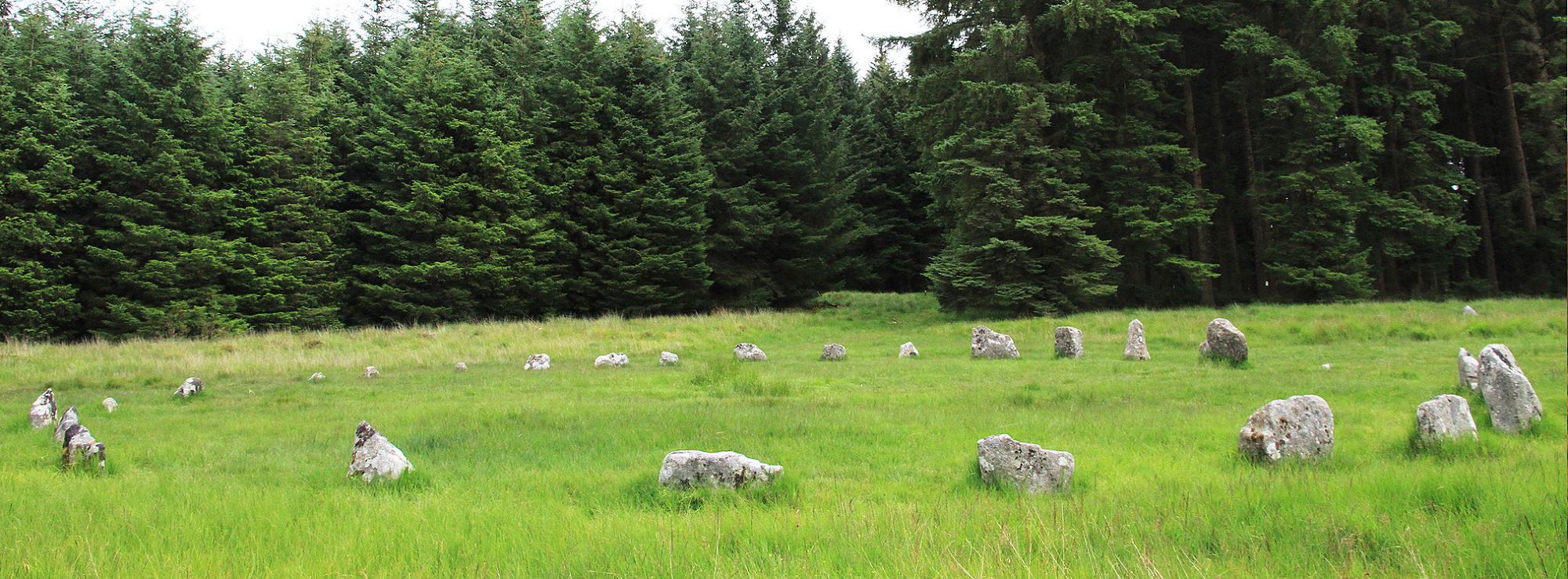

Brimpts Tin Trail
Dartmoor has a world class tinworking heritage, documented from the twelfth century to the twentieth century. This project seeks to increase, improve and facilitate information and awareness of both this, and the trail for visitors, communities and specialist groups.

In the footsteps of the Victorians
This project will research the history of the Wray Valley and the surrounding area on the eastern edge of Dartmoor during the nineteenth and early twentieth century.

Moor Medieval
A parish based project to develop understanding about medieval life and to explore the effect that early farming had on the landscape of Dartmoor over more than a thousand years.

Unveiling the Bronze Age landscape of the High Moor and Forests
The project aims to improve understanding of and to promote the internationally important Bronze Age landscape on Dartmoor.

Higher Uppacott: A Dartmoor Longhouse
Higher Uppacott is a grade I listed longhouse with early - mid 14th century origins where the lower-end shippon remains intact. This designated heritage asset has international significance and is emblematic of Dartmoor’s medieval farming built heritage.

Hameldon WWII Bomber Crash: Archaeological Survey
A project to investigate why an aircraft heading back from France to Lincolnshire in 1941 crashed on Dartmoor.
Related Articles

DTRG volunteers have been working very hard on improvements to the Brimpts Tin Mines Trail and our project is going very well indeed!! Things are moving along very nicely, so well done to all! MTMTE funded 8 pop up display panels which were completed in June, and have been taken to seven events, and been seen by over 700 people! They are currently on display in our new display room at Brimpts Farm, which is bigger and brighter. The new room had been used as a store so the first job was to clear and empty it. Then we painted the new display stands, which on a hot day, was hard work for all who came along. Since then we have cleared vegetation from behind the room, finished the painting and it all looks very smart indeed! We have now got four models, three from Mike Wright and one from Chris Kelland, these provide a real focus to what is on display.

Fourteen members of the study group met at Headland Warren on a spectacularly clear and sunny day for a guided walk around Headland Warren and it’s surrounds. The group was led by Lee Bray, Archaeologist, Dartmoor National Park Authority and the although the main focus of the walk was to look for evidence of medieval tin mining, the group viewed a wide variety of archaeological features such as pillow mounds, ancient vermin traps, mining remains from across history and even a stone row! The Whortleberries were in full flavour and delayed progress slightly but a good walk and an interesting time was had by all. If you would like to find out about forthcoming fieldtrips as part of the Moor Medieval Study Group, please contact Community Heritage Officer, Emma Stockley and ask to be put on the mailing list. emma@moorthanmeetstheeye.org

Community Heritage Officer, Emma Stockley has set up a Moor Medieval Lending Library, largely due to generous donations of books from study group members. There are a number of books relating to all aspects of medieval Dartmoor as well as some general texts on archaeology, landscape and historic buildings. There is also a small reserve collection including;The Place Names of Devon, Vol VIII Part 1 – English Place Name Society, The Place Names of Devon, Part 2 – English Place Name Society, Domesday Book Devon Part One – General Editor: John Morris, Domesday Book Devon Part Two – General Editor: John Morris, Dartmoor Atlas of Antiquities Volume 1 – The East – Jeremy Butler , Dartmoor Atlas of Antiquities Volume 2 – The North – Jeremy Butler, Dartmoor Atlas of Antiquities Volume 3 – The South West – Jeremy Butler, Dartmoor Atlas of Antiquities Volume 4 – The South East – Jeremy Butler, Dartmoor Atlas of Antiquities Volume 5 – The Second Millennium BC – Jeremy Butler. The books are housed at our Princetown office but arrangements can be made to deliver them to Parke. If anyone would like to borrow a book or make an enquiry, please contact Emma directly emma@moorthanmeetstheeye.org or call 01822 890 904.
Last update: 09 Aug 2022 2:56am

